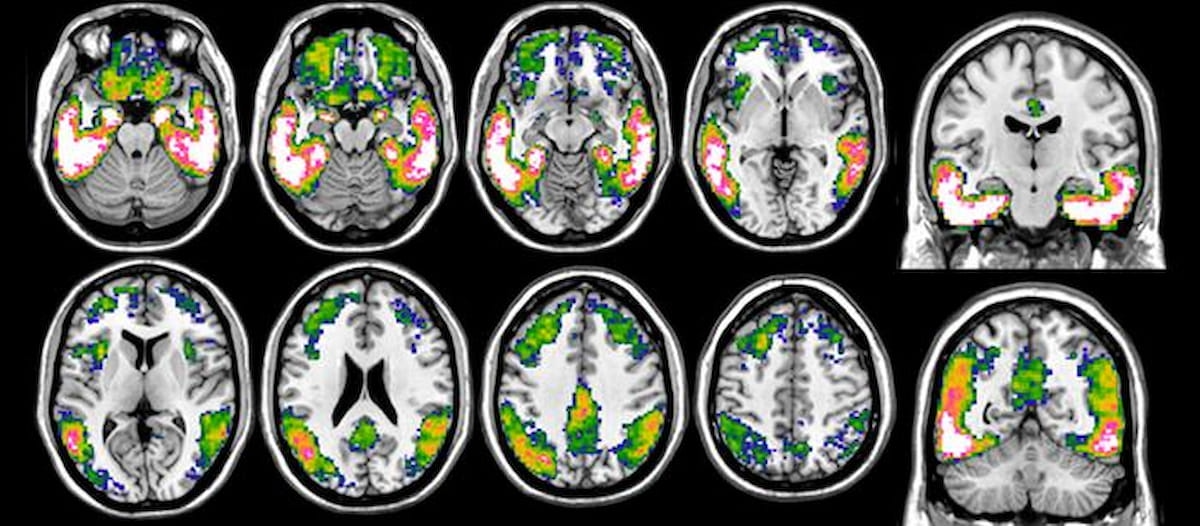Emerging Neuroradiology Concepts: Could Tau-PET be a New Standard in Assessing Possible Alzheimer's Disease?
In a recent study examining neuroimaging biomarkers of Alzheimer’s disease, researchers found that neocortical tau pathology exhibited the strongest association with cognitive decline and the use of tau positron emission tomography (tau-PET) provided the best prognostic value of all neuroimaging modalities in this patient population.
Is tau positron emission tomography (tau-PET) the best imaging modality for assessing common biomarkers associated with Alzheimer’s disease?
For a new study, recently published in Alzheimer’s & Dementia, researchers examined data from 94 study participants at a memory center who had a Mini-Mental State Examination (MMSE), tau-PET and fluorodeoxyglucose (FDG)-PET. The vast majority of the cohort also had amyloid-PET (90 participants) and magnetic resonance imaging (MRI) (81 participants). The cohort was comprised of 57 study participants with mild cognitive impairment (MCI), 20 participants with dementia and 17 participants who had no cognitive impairment, according to the study.
In a comparison of all the imaging biomarkers, the study authors found that a positive finding of neurofibrillary tangles (as measured through tau-PET) was the most significant risk factor for cognitive decline with a hazard ratio (HR) of 31.9.
In the above tau-PET imaging, one can see more pronounced tau loads with the blue to white color scale and the highest accumulation in the pink-white areas. (Images courtesy of the University of Geneva.)

In addition to demonstrating a larger number of spatially extensive relationships with cognitive impairment in comparison to neurodegeneration, neurofibrillary tangles represented the only imaging biomarker to be associated with cognitive performance stemming from the dorsolateral prefrontal cortex, according to the researchers. They noted that this brain region becomes hypometabolic in patients at later stages of Alzheimer’s disease.
“Our voxel-wise results showed that decreased performance in global cognitive assessment was related to increased tau deposition and decreased metabolism (and brain volumes) in similar expected brain areas based on the well-known brain-behavior relationship,” wrote Valentina Garibotto, M.D., Ph.D., the head of the Nuclear Medicine and Molecular Imaging Division at University Hospital Centre Geneva in Geneva, Switzerland, and colleagues.
Noting only a modest mediating effect of neurodegeneration on the relationship between the annual MMSE rate of change and neurofibrillary tangles, the study authors found a strong correlation between neurofibrillary tangles and longitudinal cognitive changes.
Additionally, when the researchers assessed different imaging biomarker profile combinations, they found that study participants with positive findings for neurofibrillary tangles and neurodegeneration, and those with a combination of negative findings for neurodegeneration and positive findings for neurofibrillary tangles both had more accelerated declines in global cognition.
“Thus, our results argue in favor of a strong independent effect (i.e., neither atrophy- nor metabolism-mediated) of tau pathology on subsequent cognitive decline,” emphasized Garibotto and colleagues.
In regard to study limitations, while the authors utilized MMSE as a measure of cognitive decline, they conceded a ceiling effect that renders it less sensitive to other testing measures. Acknowledging a relatively short follow-up period for the study, the study authors emphasized the need for longer follow-up in future studies.
The Reading Room Podcast: Current Perspectives on the Updated Appropriate Use Criteria for Brain PET
March 18th 2025In a new podcast, Satoshi Minoshima, M.D., Ph.D., and James Williams, Ph.D., share their insights on the recently updated appropriate use criteria for amyloid PET and tau PET in patients with mild cognitive impairment.
GE HealthCare Launches PET MPI Agent Flyrcado at ACC Conference
March 28th 2025The positron emission tomography myocardial perfusion imaging (PET MPI) agent, which offers a significantly higher half-life than other cardiac PET agents, was recently granted pass-through payment status by CMS that will go into effect on April 1, 2025.